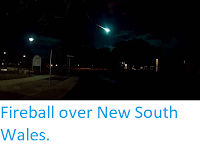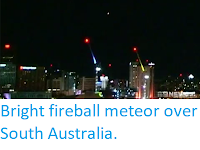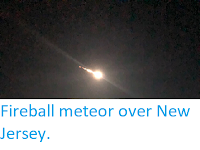The Delta Aquarid meteor shower is expected to peak on the night of Monday 29 July this year, producing a maximum of ~20 meteors per hour, though this is likely to be somewhat lower in the Northern Hemisphere. Viewing of the shower should be good this year as the peak occurs the night before the New Moon, so that there should be little interference. The radiant point of the shower (point from which the meteors appear to
radiate), which is close to the star Delta Aquari (which gives the shower its name).
The Delta Aquarids are thought to be caused by the Earth passing through the trail of Comet 96P/Machholz, where it encounters thousands of tiny dust particles
shed from the comet as its icy surface is melted (strictly sublimated)
by the heat of the Sun. 96P/Machholz is a short period, Jupiter Family Comet, crossing our orbit every 5.28 years, but the
trail of particles shed by it forms a constant flow,
The Earth passing through a stream of comet dust, resulting in a meteor shower. Not to scale. Astro Bob.
96P/Machholz was discovered by amateur astronomer Donald Machholz from Loma Peak in California; the name 96P/Machholz implies that it was discovered by Machholz and was the 96th periodic comet discovered (a periodic comet is a comet which orbits the Sun in less than 200 years).
Comet 96P/Machholz (top right) close to the Sun on 8 January 2002. Solar and Heliosphere Observatory/ESA/NASA.
96P/Machholz has an orbital period of 1929 days (5.28 years) and a
highly eccentric
orbit tilted at an angle of 58.5° to the plain of the Solar System, that
brings it from 0.12 AU from the Sun at perihelion (12% of the distance
between the Earth and the Sun, considerably inside the orbit of Mercury, and closer to the Sun than any other known periodic comet);
to 5.94 AU from the Sun at aphelion (5.94 times as far from the Sun as
the Earth or slightly more than the distance at which Jupiter orbits). As a
comet with a period of less
than 20 years, 96P/Machholz is considered to be a Jupiter Family Comet. .
See also...
Follow Sciency Thoughts on Facebook.










